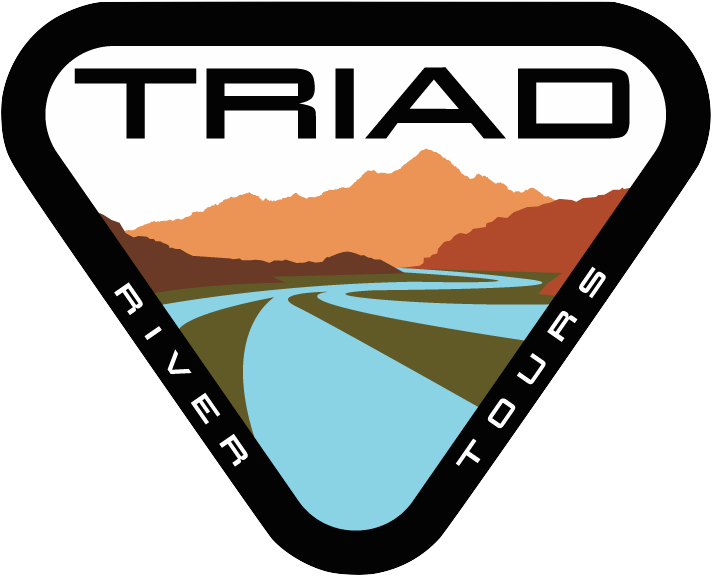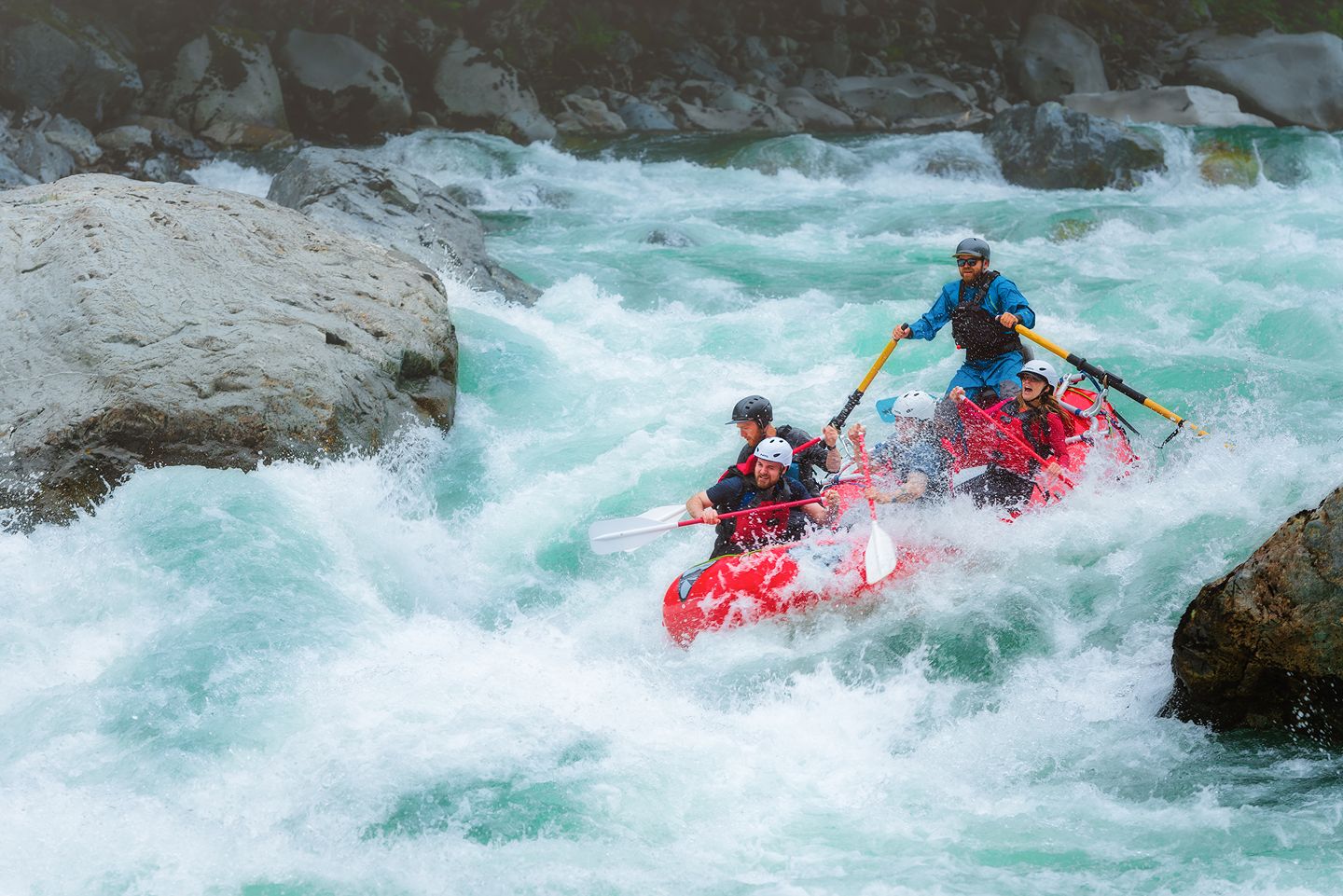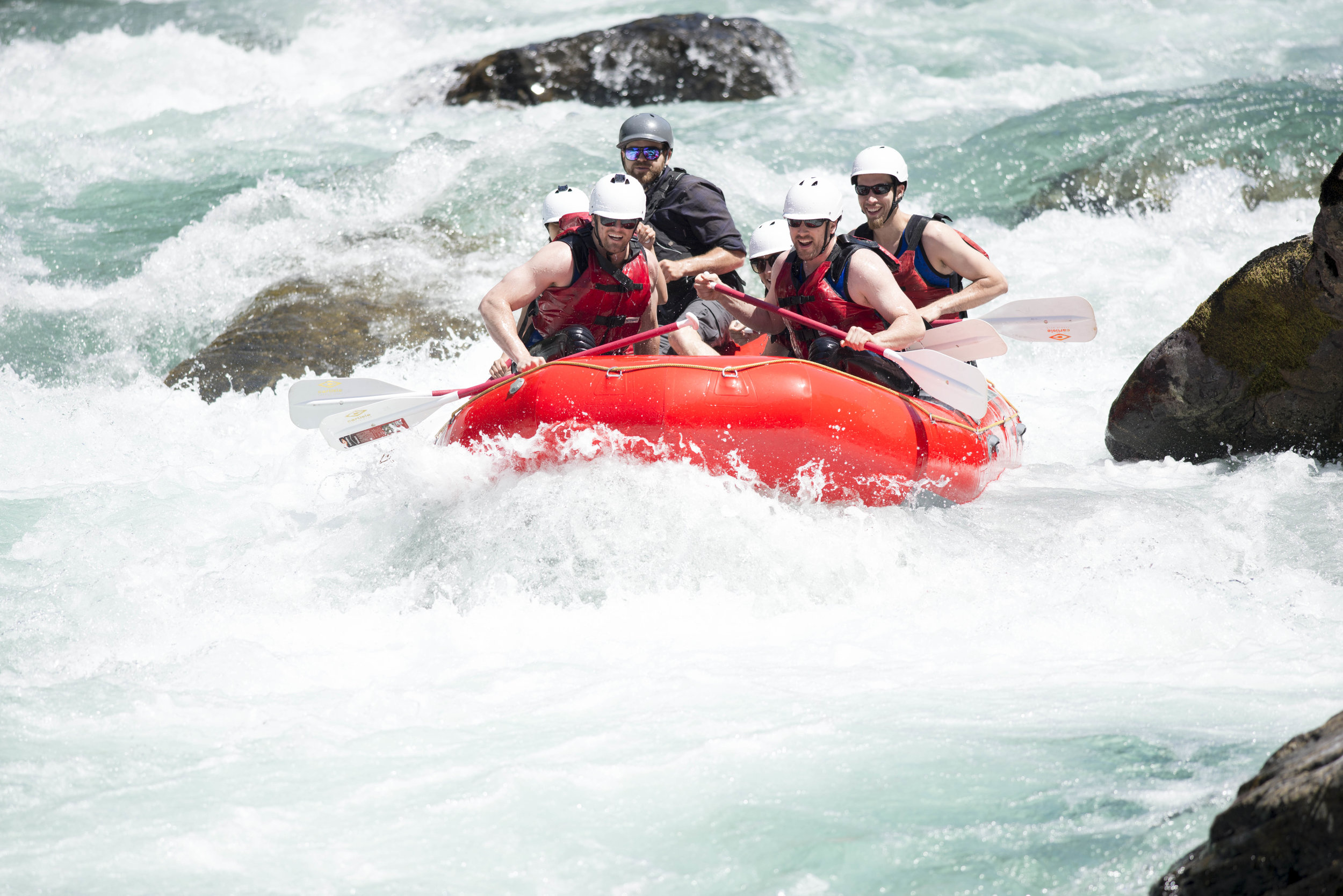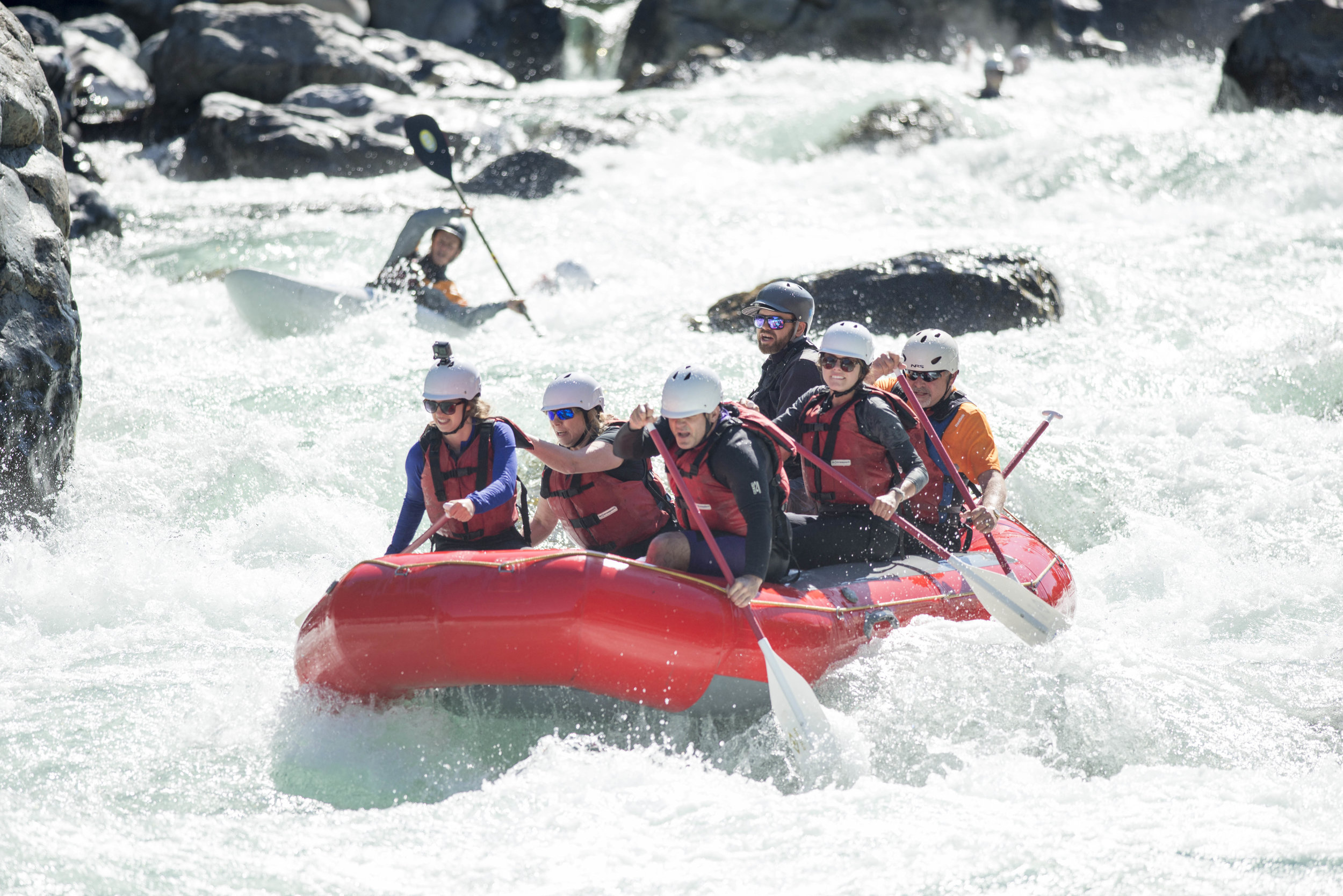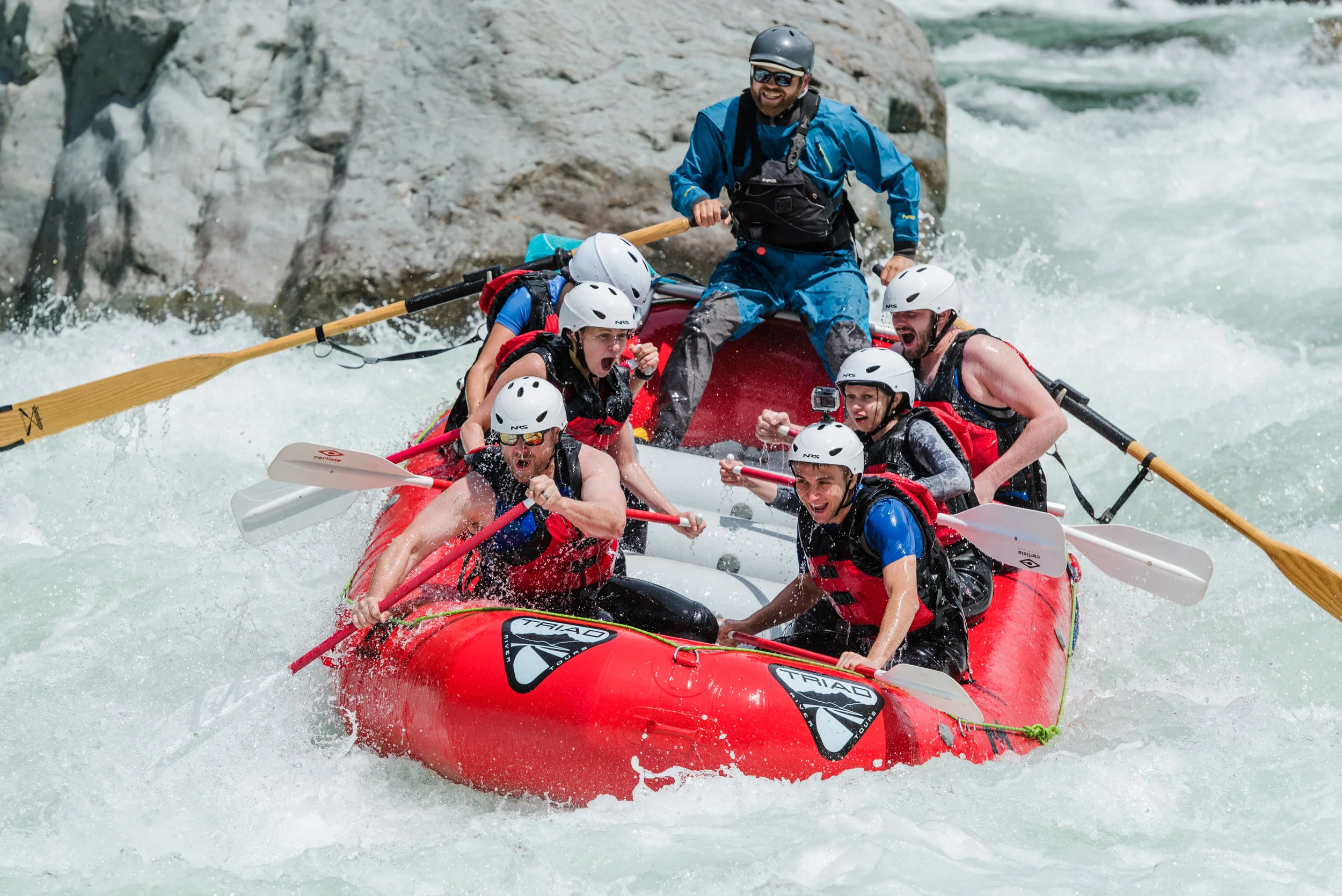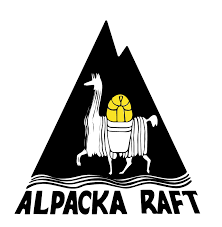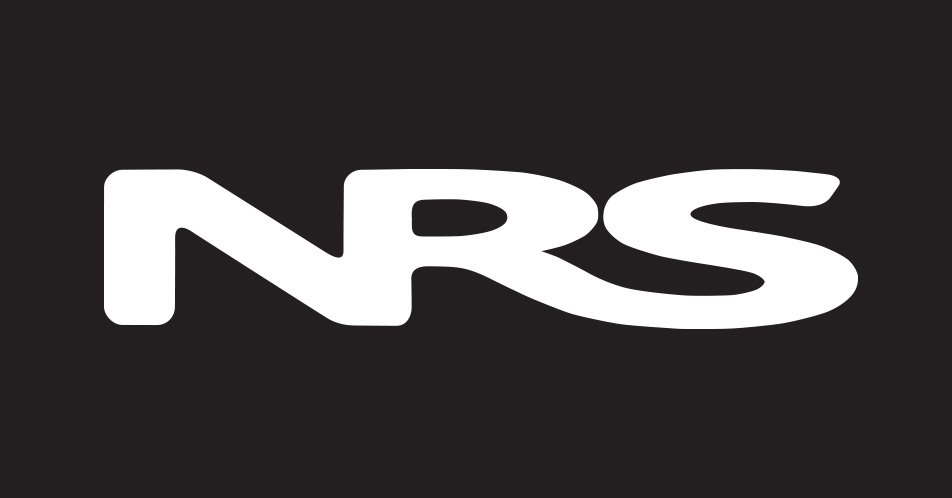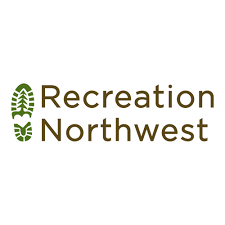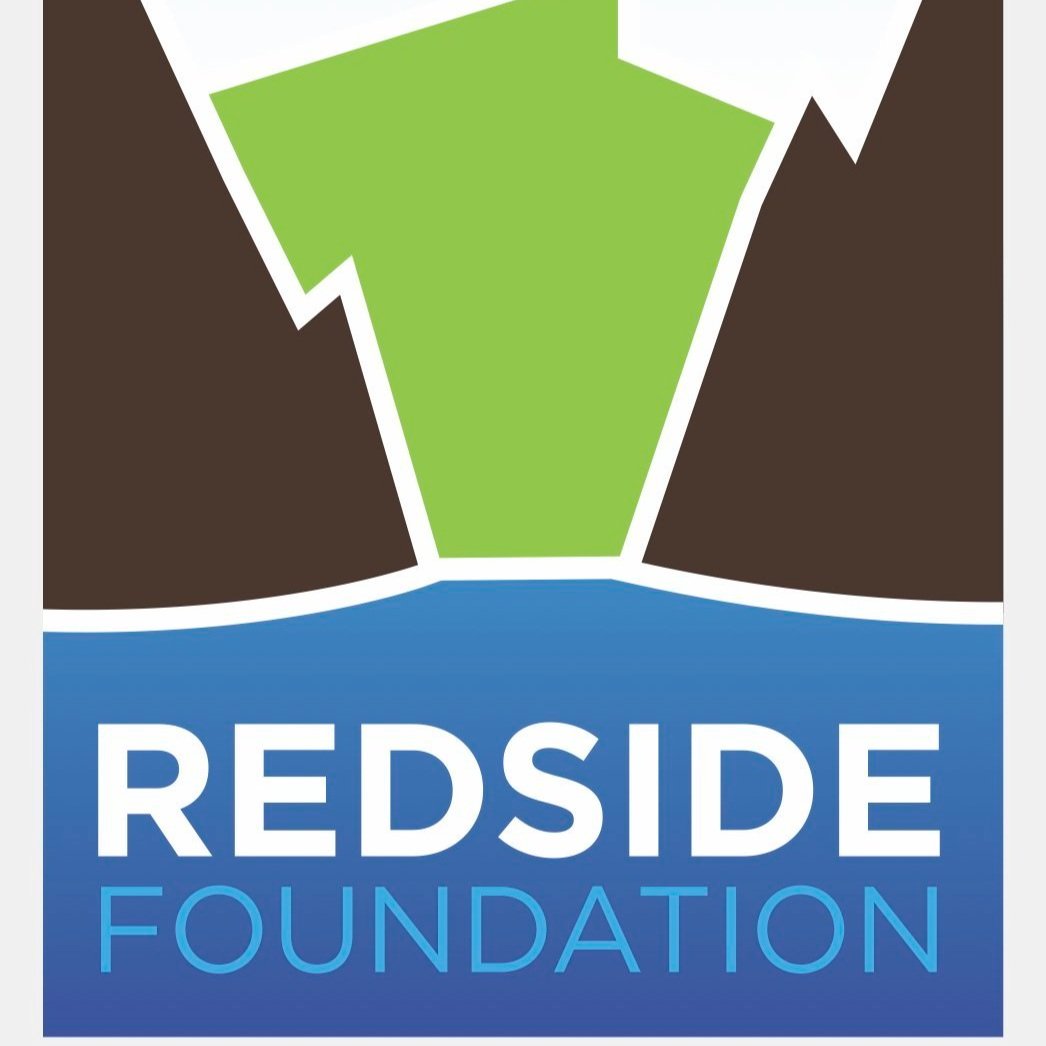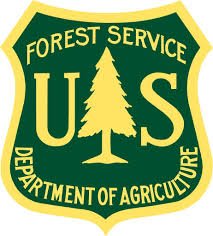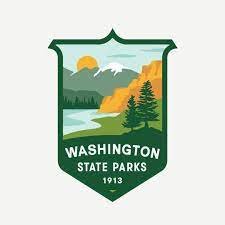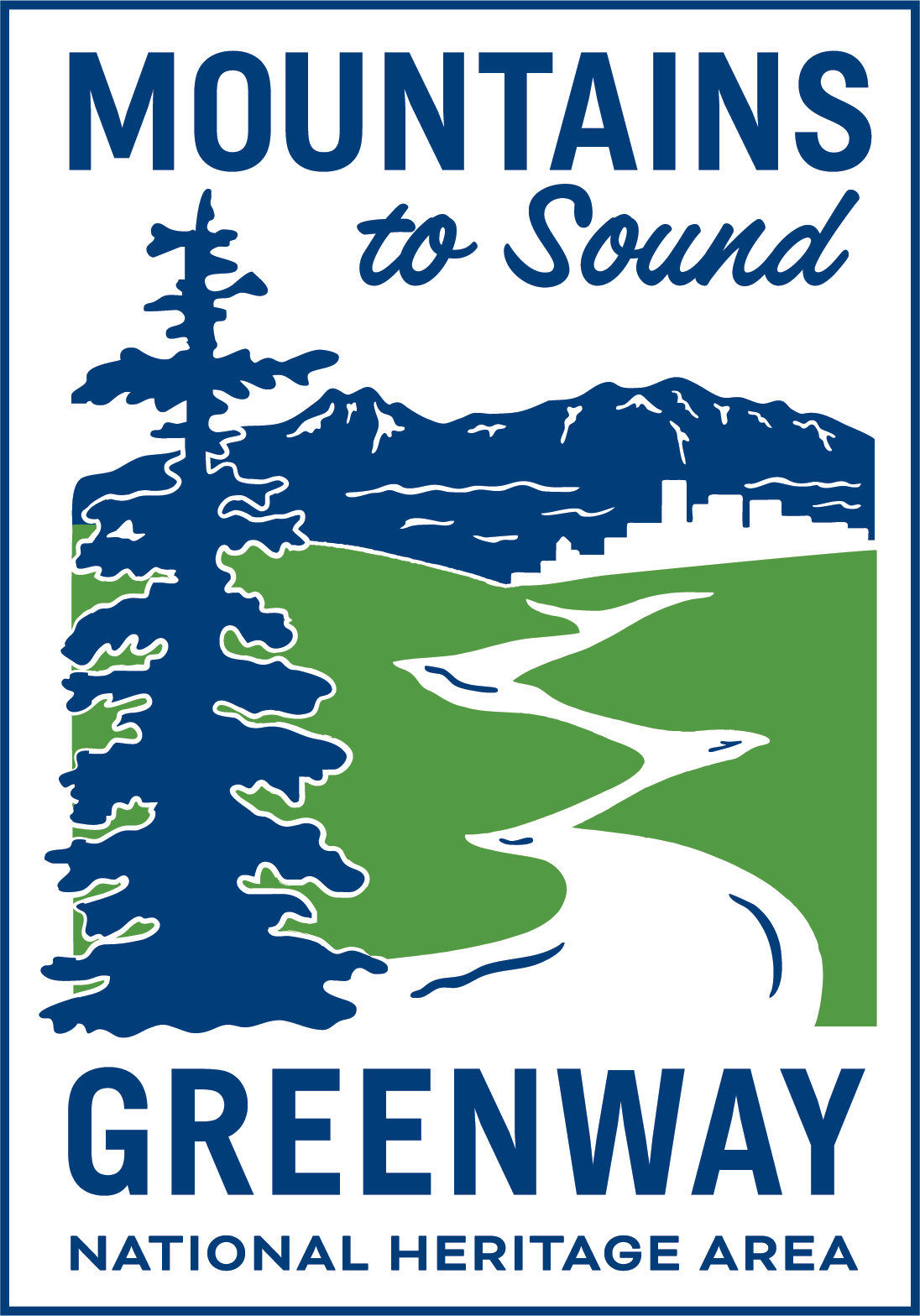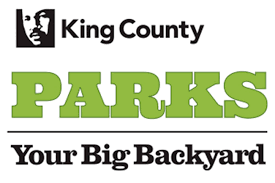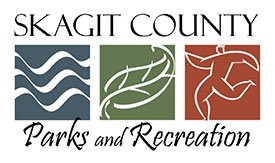Skykomish River Whitewater Rafting
Risk Classification: Class 4-5(click for info)
Ability Level: Advanced-Expert (click for info)
45 Miles from Seattle
We are currently finalizing our Skykomish safety protocols and will have availability posted very soon. For questions please call us at 360-510-1243.
Skykomish Rafting Trip Summary
Skykomish River Chart
Pack List: (click here)
Difficulty: Class 4-5 (explanation here)
Exertion Level: Somewhat Hard (20%), Very Hard (80%) (explanation here)
Normal Season: May-August (updated river conditions here)
Length of trip: 7 miles
Duration of trip: 1.5-2.5 hours on the river depending on river flow. 2.5-3.5 hours total (includes safety talk and shuttle ride)
Minimum age: 18 (adults only)
Minimum weight: 90lbs
Liability Waiver Required prior to trip: Yes (online here)
Meeting Location: Big Eddy Park (click here)
For a PDF map with directions click here.
Risk Analysis
Number of significant rapids (Class 3 or higher) at normal flows: 10-12
Generalized classification of river by American Whitewater: Class 4 (4+)
Most significant rapid: Boulder Drop
Notes on Boulder Drop: "This rapid is identified in the American Whitewater Safety Code as a (Class) IV+ standard at 5,000cfs" (source: American Whitewater). We agree with the Class 4+ designation for Boulder Drop. Flows that are exceptionally high can be considered Class 5 by some standards. Flows of 2,500 cfs and lower may be considered Class 4 or 4-.
Major risks to human safety: Rocks, blunt trauma, and abrasion (particularly at low water), hypothermia/exposure (especially in early season), flush drowning (especially in early season)
Skykomish River Rafting Trip Details
The Skykomish River whitewater rafting experience is an opportunity for physically fit people, who are good swimmers, with previous whitewater rafting experience to enjoy some really amazing, and challenging whitewater. "The Sky", as it is often called, is a beautiful and classic intermediate-to-advanced whitewater run that features several Class 3 rapids as well as boasting the largest, most significant whitewater drop near Seattle: Boulder Drop. The Skykomish has a long tenured reputation as an outstanding whitewater adventure and has been the main whitewater attraction in the area since people began rafting in Washington decades ago. Boulder Drop, the largest rapid on the Skykomish, is considered a Class 4 rapid by American Whitewater but can reach into the Class 4+ range when the river is running higher. Some people refer to the Skykomish as a "Class 5 commercial run", as it has a level of danger and technicality that other Washington Rivers lack. Our expert guides love taking the technical route through this rapid and testing their skill with tenacious paddling crews. This is not a river for the faint at heart or the inexperienced. For those wishing for a more introductory river rafting experience we recommend our Skagit River Whitewater trip. The Skykomish River rafting trip requires excellent attention to safety instructions and paddle commands to give your crew the best chance of safely navigating the wild rapids. Eat a good breakfast, and lace up for a whitewater adventure that can't be beat! A beautiful river corridor that sits within a 45-minute drive from Seattle (with no traffic), the Skykomish River rafting trip offers an incredible escape from the rigors of daily life. If you would like more information on our rivers, please be sure to see our blog.
Trip Itinerary
When you arrive at Big Eddy near Gold Bar, you will know that you're about to embark on a serious whitewater adventure. Whitewater enthusiasts from all over the northwest come here to give the Sky a run, so don't be surprised to see kayakers, rafters, and many parts of the whitewater community gathered here. A big parking lot with restrooms is there, and if you look around you will see Triad River Tours with its red Maravia rafts, accompanied by either a large school bus or Chevrolet Suburbans. Once you check in with your guide, you'll be given a wetsuit (if previously rented upon reservation), helmet, and type-5 personal floatation device. Take these items with you and get yourself suited up. Remember that your instructional safety video, which was included in your confirmation email, will give you directions on how to get your gear fitted to you properly.
Once you have your gear ready to go, you'll be given a paddle. Feel the adrenaline start to build as you see the last few people get ready for their trip and begin to congregate at the bus/vehicle. The guides will go through a roll call and head count to ensure that everyone is accounted for. This will be your chance to ask questions prior to heading out on the Skykomish whitewater rafting trip. Some questions you may want to consider are:
What is the river level and what class are the rapids today?
Is my life jacket and wetsuit fitting me correctly?
Once you have yourself geared up, everyone will board the school bus and head upriver to our raft put-in, located at Cable Drop. Here you can voluntarily assist the guides in carrying the raft down the USFS designated raft launch area, being careful not to twist an ankle or slip on the often times wet rocks that are near the raft launch site. Get yourself situated now by the river’s edge and prepare to be educated on whitewater safety by some of the best in the business. In 2015, our Skykomish River rafting trip leaders are Luke Baugh, Brandon Steele, Blake Henderson, and Joshua Larsen. All of these guides have well over a decade of experience on the river, so please listen closely as they go into detail about rescue procedures and potential evacuation protocols. This is your time to get with yourself, internally, and give yourself one last opportunity to opt out. No one will think lesser of you and everyone will understand if you decide not to go. Especially in higher water, the Skykomish can be a daunting experience, so take it seriously and do not be afraid to play it safe. It's always better to respect the river and be cautious.
After your safety speech the guides will go over simple paddle commands. Typically, we ask our guests to use forward and back paddle strokes, which will give the raft momentum heading into massive waves and holes and will allow the raft to slow down or get away from obstacles that are dangerous or otherwise not preferred in our route plan. Guides will help you discover efficient paddle techniques so that you can "dig in" and really get some momentum heading into the rapids. Get yourself ready because from here on you'll be paddling down a wild river.
A group of rafting guests of Triad River Tours on the Skykomish River near Seattle Washington
Your first rapids are mainly Class 3, which will get you wet and introduce you to the chilling water of the Skykomish, but don't worry—your blood will be boiling in preparation for the larger rapids downstream. The next rapids are "Boneyard" (otherwise known as Paris Hilton's rapid) which is a subtle Class 2, followed by Confluence Rapid (Class 2), Nothing Rapid (Class 2) and Butter and Biscuit (Class 2). You'll know you're getting into the bigger whitewater as you approach "Anderson Hole".
Boulder Drop represents a departure from most of the rapids in Western Washington because of the large rock slabs that complicate the entry and route through it at every water flow. Boulder Drop is incredibly complex and requires precise maneuvering and great skill by the guide accompanied by great teamwork by the paddling crew. Being dynamic, Boulder Drop changes dramatically at different water flows, so some days you can run it through the center, while other days your guides may need to take the "Mercy Chute" which is a sneak route through the right side of the rapid. As river professionals we will always tend to go more conservative when it comes to dangerous rapids like Boulder Drop. At the same time, if the crew is experienced and everyone wants to go big, then let your guide know and if it's unanimous then your raft can go for the "meat" of the rapid.
A group of Skykomish rafters after running the infamous rapid called Boulder Drop.
Above Boulder Drop we always stop and do a "check with me", which will be a procedure that your guides go through in your safety talk and briefing prior to the trip. A hand signal that means "I'm okay" will be given and all participants must respond with the same signal (please click here for a review of industry standard whitewater safety preparations and hand signals). This is your opportunity to "opt out" of running Boulder Drop. If you do not feel confident at this time you need to vocally let your guide know so that you can be evacuated from the river corridor. Once the rafts are back into the river they are fully committed to running the rapid, so you must be prepared and ready to paddle as hard as you can, as well as be prepared for any potential rescue or incident that could happen as a result of running the rapid.
Most of the time we run Boulder Drop successfully, and if that is a case you can be sure that everyone will be hooting and hollering about the great ride through one of the biggest commercially run whitewater rapids in the Northwest. Truly, a breathtaking event has just happened. However, we must stay on our toes as several Class 3+ rapids are literally waiting around the corner: "The Weir" (Class 3), which is located just downstream from Boulder Drop, followed by Banzai (Class 3), LunchHole (Class 3+) and Aquagasm (Class 3+). After Railroad (Class 3+) and Fisherman's (Class 3+) you can enjoy the splashy "boogie water" for the remainder of the trip. This would be a great time to soak in some of the scenery and talk with your guide about the history of the river and community, as well as our other whitewater rafting adventures that may interest you.
Upon arrival at Big Eddy, where your car awaits, you can voluntarily assist your guides in getting your raft out of the water and back up to the loading area as quickly as possible to ensure that other river runners can get their chance to run the Skykomish. At this time, you can hand your wet used gear to one of our employees and get ready for a safe drive to your next destination. Remember that your guides can tip you over, but you cannot overtip your guide.
Things to do near the Skykomish
This region of the central Cascades has a bit of everything, from leisurely lake hikes to some of the best granite climbing in the state. From the sweeping views of Evergreen Mountain Lookout to the sheer cliffs of Index, this region is worth a weekend of exploration after your Skykomish whitewater rafting trip.
Hiking and Trail Riding
For a hike that appeals to every level of wilderness experience, Wallace Falls State Park has a variety of viewpoints and turnaround spots along the nine spectacular waterfalls it is named for. The Upper Falls are the only destination that require significant elevation gain to reach, and the Lower and Middle Falls are plenty spectacular for those who don’t want to tackle the switchbacks. If open alpine views are more your style, try the short but steep climb to Evergreen Mountain Lookout. With almost 1,500 feet of elevation gain in the 1.4-mile trail to the peak, it takes a bit of effort, but sweeping views of Rainier and the Monte Cristo massif more than make up for the burn in your legs. If you make your reservations far enough in advance you can stay the night in the lookout, which is on the National Register of Historic Places. In World War II it was used as an Aircraft Warning Station.
For those who want a bit more of an adrenaline high—or a few more finger cramps—just outside the town of Index, granite cliffs rise to meet the mountains, offering a wide range of moderate- to- hard sport and trad climbing routes. For those new to the world of climbing, the American Alpine Institute offers guided climbing. The town of Index is also a great spot for lazing beside the river and grabbing a bite to eat at the River House Café.
Camping and Accommodations
There are two excellent Forest Service campgrounds in the area, Troublesome Creek Campground and Beckler River Campground. Troublesome Creek has sites for both tents and RVs, vault toilets, and drinking water, as well as fishing in the creek and the Skykomish River. Beckler River can also accommodate both tents and RVs and has drinking water and toilets available. Nestled in the old growth forest along the riverbank, it offers a serene escape from the bustle of the city. If you prefer your accommodations with flush toilets and Wi-Fi, try the Stevens Pass Hotel in Gold Bar, which offers cabin-style rooms and easy access to the area’s outdoor activities. While in Gold Bar try out La Hacienda for great Mexican food, Rico’s Pizza for a wonderfully non-chain pie, or Zeke’s Drive In for a classic burger.
For More Information:
